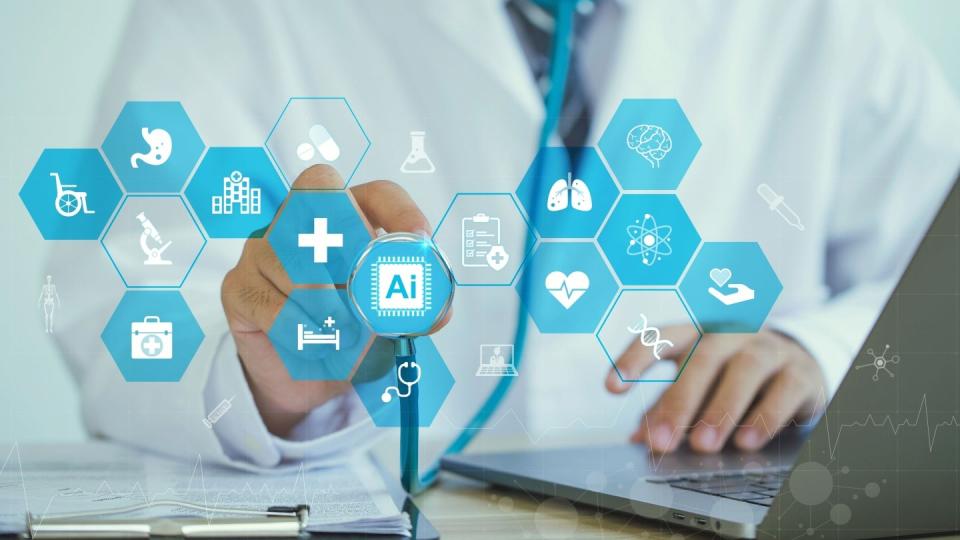The incorporation of artificial intelligence (AI) into healthcare represents a transformative shift in how medical services are delivered and diseases are diagnosed. AI’s journey in healthcare began with basic algorithms capable of analyzing structured data but has significantly expanded in scope and complexity. Today, it leverages machine learning, natural language processing, and predictive analytics to enhance diagnostic accuracy and patient outcomes. Pioneering advancements have been fueled by vast data availability and increasing computational power. From analyzing medical imaging to processing genomic data, AI applications continue to evolve rapidly, optimizing decision-making and streamlining clinical workflows. This evolution has redefined healthcare possibilities.
Medical diagnostics serves as a cornerstone of effective healthcare, encompassing the processes of identifying diseases and conditions through symptoms, tests, and imaging. Accurate diagnostics rely on vast repositories of clinical data, including patient history, laboratory findings, and radiological images. The practice demands precision, as errors can lead to misdiagnoses and ineffective treatments.
Key elements shaping diagnostics include:
Clinical Expertise: Physicians interpret results using training and experience.
Technological Tools: Diagnostic instruments and imaging modalities like MRIs or ultrasounds assist in identifying conditions.
Data Constraints: Variability in data quality or access can present challenges.
By understanding diagnostic workflows, AI systems can be tailored to alleviate bottlenecks, ensuring robust integration into healthcare practices.
AI is going to be the biggest revolution in healthcare, enabling precise, personalized medicine with the power to transform diagnostics and treatment like never before.
Artificial intelligence is transforming diagnostic workflows by leveraging advanced algorithms to process complex datasets with remarkable speed and precision. Machine learning models excel in identifying patterns within medical imaging, such as X-rays, MRIs, and CT scans, aiding in the early detection of critical conditions like cancer and cardiovascular diseases.
AI-powered tools also integrate electronic health records (EHRs) to correlate patient history with real-time diagnostics, ensuring personalized care. Features like natural language processing expedite the analysis of medical notes and reports. With predictive models, clinicians gain insights faster, minimizing human error and facilitating timely, informed decision-making for improved patient outcomes.
AI Applications in Radiology: Revolutionizing Imaging Interpretation
Artificial intelligence is significantly enhancing radiology by improving the speed, accuracy, and consistency of imaging interpretations. Machine learning algorithms analyze vast datasets, enabling real-time detection of abnormalities such as tumors, fractures, or lesions. AI-powered tools assist radiologists by identifying subtle patterns undetectable to the human eye, improving diagnostic accuracy for diseases like cancer and cardiovascular conditions.
Image Segmentation: AI classifies tissues and structures in scans, enabling precise measurements and localization of abnormalities.
Disease Prediction: Algorithms predict disease progression, aiding early intervention strategies.
Workflow Optimization: AI reduces manual workload by automating repetitive tasks like image sorting and report generation.
Such tools complement human expertise, ensuring better outcomes and personalized patient care.
Machine learning plays a pivotal role in forecasting disease outcomes by analyzing complex datasets with speed and precision. Its algorithms detect patterns in diverse patient data, including medical histories, genomic profiles, and lifestyle factors, which human analysis may overlook. By identifying these correlations, machine learning enables early diagnosis, improves risk stratification, and tailors treatment plans effectively.
Key applications include:
Predicting cancer progression through tumor imaging and molecular data.
Forecasting cardiovascular events using biomarkers and clinical metrics.
Monitoring chronic diseases like diabetes using real-time wearable data.
Advancements in machine learning enhance decision-making, equipping healthcare providers with insights to optimize patient care continuity.
Natural Language Processing (NLP) in Analyzing Medical Records
Natural Language Processing (NLP) enables computers to interpret and analyze unstructured text within medical records, offering transformative benefits for healthcare. By processing vast amounts of clinician notes, discharge summaries, and diagnostic reports, NLP extracts critical information that aids in more accurate diagnoses. This technology identifies patterns, such as symptom clusters or risk factors, that may otherwise go unnoticed.
Key capabilities of NLP in medical records include:
Entity recognition: Identifying medical terms, diagnoses, and medications.
Sentiment analysis: Gauging patient or clinician statements for urgency.
Context-based insights: Differentiating between past and current conditions.
NLP facilitates interoperability by standardizing terminologies, improving data sharing, and supporting evidence-based decision-making in clinical practice.
AI-driven tools are revolutionizing pathology and laboratory diagnostics by enhancing accuracy and efficiency. These tools leverage machine learning algorithms to analyze complex datasets, such as histopathological images and biochemical results. Pathologists benefit from automated image recognition systems that detect abnormalities, like tumor margins or cellular irregularities, faster than manual methods.
AI-powered platforms can standardize lab report generation, reduce transcription errors, and flag abnormal values for further review. By integrating predictive analytics, these systems aid in early disease detection and personalized treatment recommendations. Advanced natural language processing enables seamless analysis of unstructured medical data, improving reporting workflows.
The integration of AI technologies in medical diagnostics raises significant ethical and regulatory challenges that require careful attention.
Patient Privacy: AI-driven systems often rely on vast amounts of patient data, potentially exposing sensitive health information. Adherence to strict data protection laws, such as HIPAA, is essential to safeguard patient confidentiality.
Bias in Algorithms: The risk of algorithmic bias can lead to unequal treatment outcomes. Ensuring diverse training datasets and continuously auditing AI models are critical to achieving fairness.
Accountability and Liability: Determining accountability for diagnostic errors made by AI systems poses legal and ethical dilemmas, necessitating clear guidelines.
Regulation: Regulatory frameworks must balance innovation with patient safety, requiring rigorous testing and certification for AI tools before clinical deployment.
Collaborative efforts between technologists, healthcare providers, and policymakers are vital to addressing these concerns.
AI has demonstrated a significant ability to reduce diagnostic errors by analyzing vast datasets with precision and speed. Through advanced algorithms, it detects subtle patterns in medical images, lab results, and patient histories that might be missed by human observation. For instance, AI-driven tools in radiology can identify abnormalities, such as tumors, with higher accuracy than traditional methods.
Moreover, AI optimizes workflows, eliminating redundant tests and unnecessary procedures, which contributes to cost savings. It enables predictive analytics to guide timely interventions, reducing hospital readmissions and treatment expenses. These advancements ensure better resource allocation and foster greater efficiency.
Artificial intelligence has demonstrated transformative potential in diagnostics across various medical fields.
Radiology: AI-powered systems, such as deep learning algorithms, assist in detecting abnormalities in X-rays, CT scans, and MRIs. For instance, AI has improved early detection of lung cancer by identifying nodules too small for human observation.
Pathology: Digital pathology systems leverage AI to analyze tissue samples, reducing diagnostic errors and accelerating disease identification, particularly in cancer detection.
Cardiology: AI models utilize ECG data to identify conditions like atrial fibrillation and heart failure earlier and more accurately than traditional methods.
Ophthalmology: AI-based tools, like those designed for diabetic retinopathy screening, ensure quicker and scalable diagnosis in resource-limited settings.
These applications exemplify AI’s capacity to increase diagnostic efficiency and accuracy significantly.
Artificial intelligence is poised to revolutionize medical diagnostics by enhancing precision and efficiency. Emerging opportunities include the integration of AI algorithms with imaging technologies, enabling rapid identification of conditions such as cancer and neurological disorders. AI-powered tools can analyze vast datasets, uncovering patterns that may elude clinicians.
Innovations include the development of predictive models, real-time monitoring through wearable devices, and personalized treatment recommendations. Advancements in natural language processing are also transforming how patient histories are analyzed.
The potential for global scalability offers hope for underserved populations. However, ethical considerations around data privacy and algorithmic biases remain critical for progress.
Artificial intelligence is revolutionizing patient care by enabling enhanced accuracy and speed in diagnostics. By utilizing machine learning algorithms, AI systems can identify patterns in medical data that often elude human observation. These technologies assist healthcare professionals in areas such as imaging analytics, where they spot anomalies in X-rays, MRIs, and CT scans with unparalleled precision. AI also supports early detection of diseases, including cancer and cardiovascular conditions, by analyzing biomarkers and genomic data. Furthermore, predictive analytics driven by AI allows for personalized treatment plans, improving outcomes. As adoption increases, AI continues to redefine diagnostic capabilities industry-wide.




